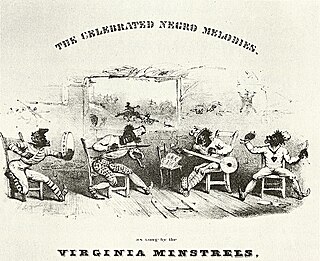
Henry Bergh founded the American Society for the Prevention of Cruelty to Animals (ASPCA) in April, 1866, three days after the first effective legislation against animal cruelty in the United States was passed into law by the New York State Legislature. Bergh also prompted the formation, in 1874, of the Massachusetts Society for the Prevention of Cruelty to Children (MSPCC).

The Courtship of Miles Standish is an 1858 narrative poem by American poet Henry Wadsworth Longfellow about the early days of Plymouth Colony, the colonial settlement established in America by the Mayflower Pilgrims.
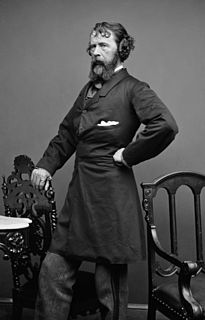
Nathaniel Parker Willis, also known as N. P. Willis, was an American author, poet and editor who worked with several notable American writers including Edgar Allan Poe and Henry Wadsworth Longfellow. He became the highest-paid magazine writer of his day. For a time, he was the employer of former slave and future writer Harriet Jacobs. His brother was the composer Richard Storrs Willis and his sister Sara wrote under the name Fanny Fern.

John Bartholomew Gough was a United States temperance orator.

The Longfellow House–Washington's Headquarters National Historic Site is a historic site located at 105 Brattle Street in Cambridge, Massachusetts. It was the home of noted American poet Henry Wadsworth Longfellow for almost 50 years, and it had previously served as the headquarters of General George Washington (1775-76).

Twice-Told Tales is a short story collection in two volumes by Nathaniel Hawthorne. The first was published in the spring of 1837, and the second in 1842. The stories had all been previously published in magazines and annuals, hence the name.
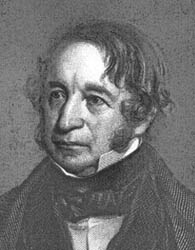
Nathan Appleton was an American merchant and politician and a member of "The Boston Associates".

The fireside poets – also known as the schoolroom or household poets – were a group of 19th-century American poets associated with New England. These poets were very popular among readers and critics both in the United States and overseas. Their domestic themes and messages of morality presented in conventional poetic forms deeply shaped their era until their decline in popularity at the beginning of the 20th century.

Timothy Shay Arthur — known as T. S. Arthur — was a popular 19th-century American author. He is famously known for his temperance novel Ten Nights in a Bar-Room and What I Saw There (1854), which helped demonize alcohol in the eyes of the American public.
Henrietta Christian Wright (1854–1899) was an American children's author who resided in East Brunswick Township, New Jersey. She was born in 1854 in Old Bridge in Middlesex County, New Jersey and died there in 1899 of tuberculosis. See her tombstone here.

Tales of a Wayside Inn is a collection of poems by American poet Henry Wadsworth Longfellow. The book, published in 1863, depicts a group of people at the Wayside Inn in Sudbury, Massachusetts as each tells a story in the form of a poem.
"The Saga of King Olaf" is a poetic sequence by American poet Henry Wadsworth Longfellow, published in 1863 as part of his book Tales of a Wayside Inn.
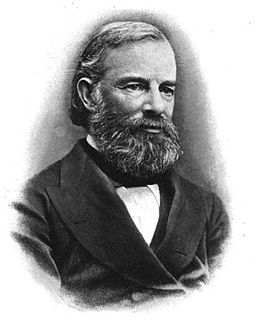
Samuel Longfellow (1819–1892) was an American clergyman and hymn writer.

"The Village Blacksmith" is a poem by Henry Wadsworth Longfellow, first published in 1840. The poem describes a local blacksmith and his daily life. The blacksmith serves as a role model who balances his job with the role he plays with his family and community. Years after its publication, a tree mentioned in the poem was cut down and part of it was made into an armchair which was then presented to Longfellow by local schoolchildren.
Outre-Mer: A Pilgrimage Beyond the Sea is a prose collection which was the first major work by American poet Henry Wadsworth Longfellow. The term "outre-mer" is French for "overseas".
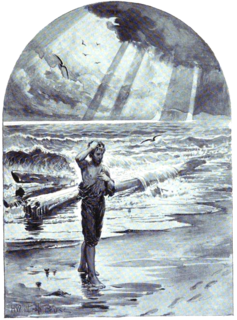
"A Psalm of Life" is a poem written by American writer Henry Wadsworth Longfellow, often subtitled "What the Heart of the Young Man Said to the Psalmist".

Hyperion: A Romance is one of Henry Wadsworth Longfellow's earliest works, published in 1839. It is a prose romance which was published alongside his first volume of poems, Voices of the Night.

Kavanagh is a novel by the American poet Henry Wadsworth Longfellow.
Charles Western Taylor, often billed as C. W. Taylor, was a well-known actor and dramatist in the United States in the mid-19th century. He is best known today, though only as a footnote, for writing one of the first stage adaptations of Uncle Tom's Cabin.









